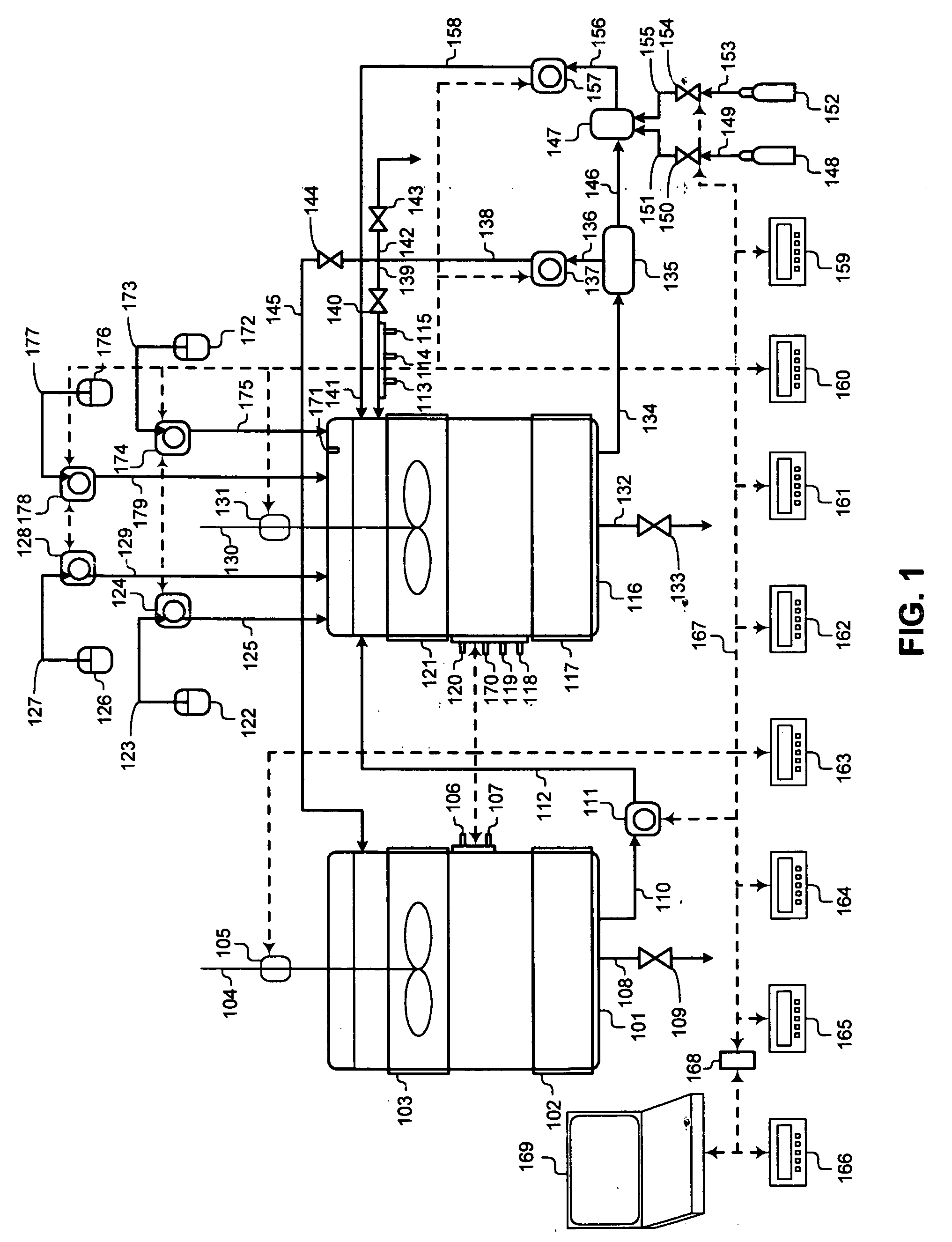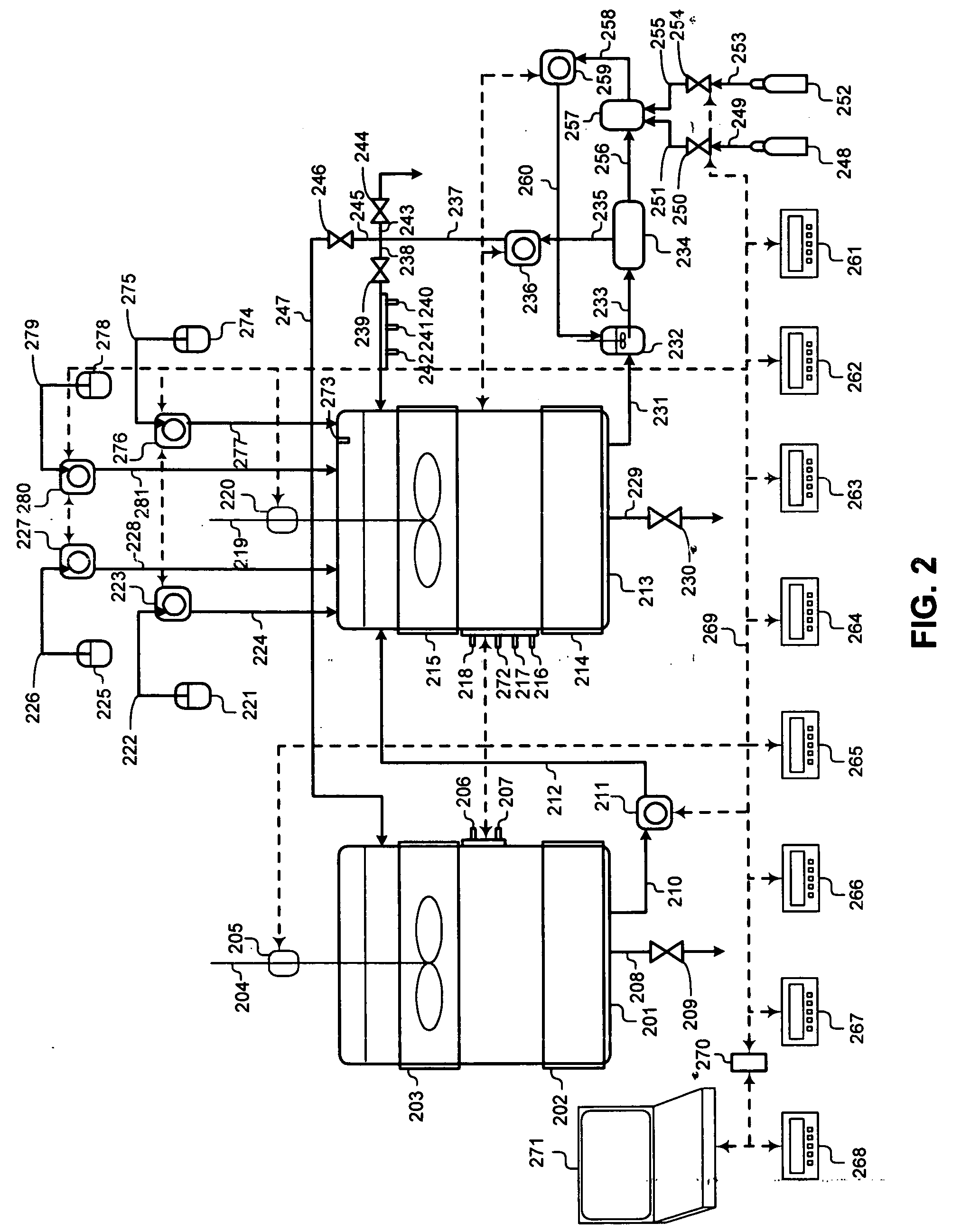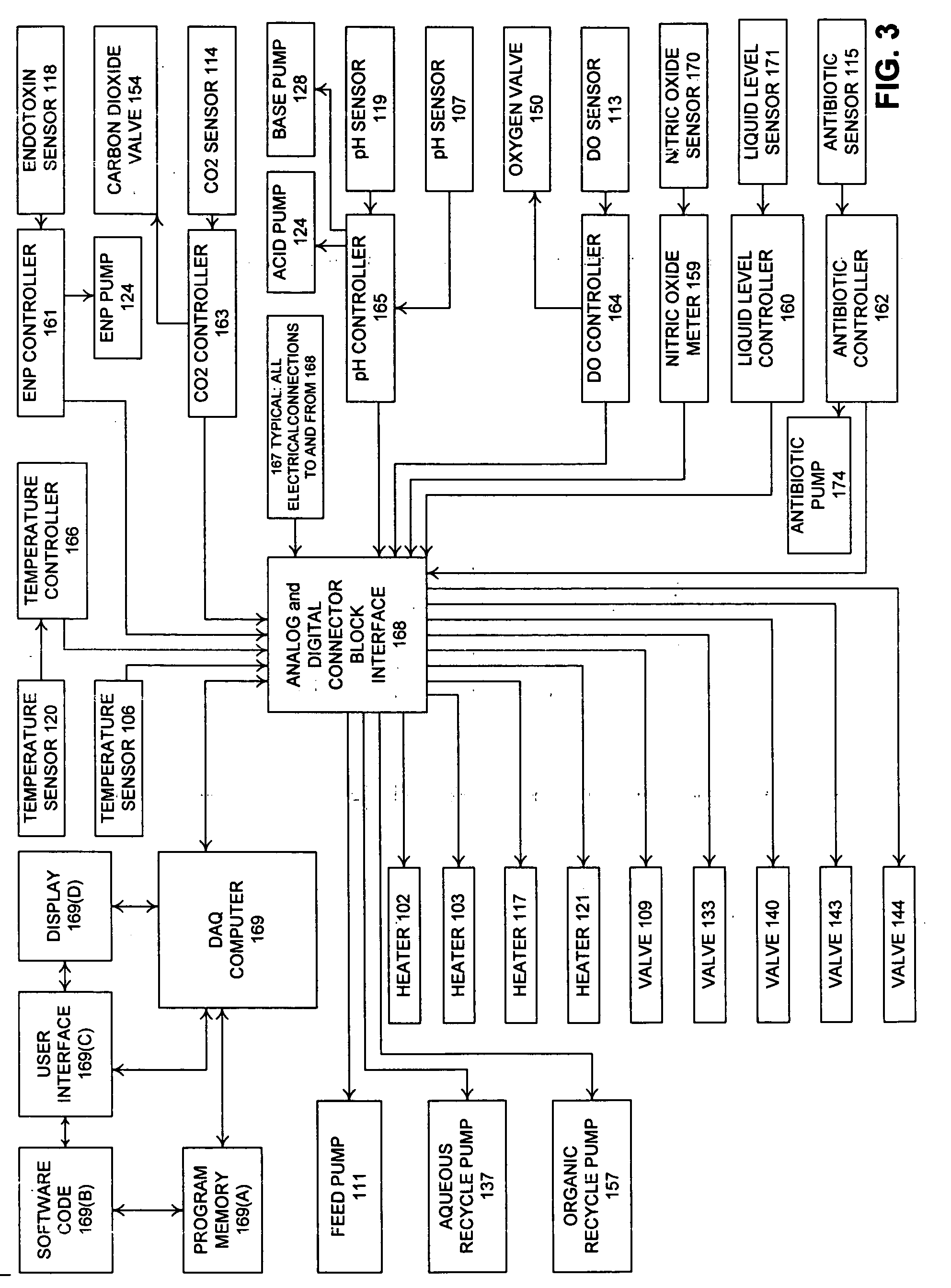Method and apparatus for cell culture using a two liquid phase bioreactor
a bioreactor and liquid phase technology, applied in bioreactors/fermenters, artificial cell constructs, biomass after-treatment, etc., can solve the problems of cellular death and apoptosis, and formation of potentially toxic oxygen radicals, so as to carbon dioxide, and increase the bioavailability of oxygen.
- Summary
- Abstract
- Description
- Claims
- Application Information
AI Technical Summary
Benefits of technology
Problems solved by technology
Method used
Image
Examples
Embodiment Construction
[0045] The invention is directed at an improved method of culturing, proliferating, growing, and inducing differentiation in animal and mammalian precursor cells, ES cells, endocrine progenitor cells, pancreatic progenitor cells, pancreatic stem cells, pancreatic duct epithelial cells, nestin-positive islet-derived progenitor cells (NIPs), or pluripotent stem cells, or pluripotent non-embryonic stem (PNES) cells in a bioreactor through application of molecular biology techniques. The invention is also directed at an improved method of culturing, proliferating, growing, and inducing differentiation in animal or mammalian precursor cells by application of advanced process control methodology, microprocessor controllers, process sensors, control setpoints, and control (setpoint) parameters are used to control crucial cell culture process during cell culturing.
[0046]FIG. 1 illustrates a process flowsheet demonstrating the interworking of the various components of a two phase liquid bio...
PUM
| Property | Measurement | Unit |
|---|---|---|
| pH | aaaaa | aaaaa |
| concentration | aaaaa | aaaaa |
| concentration | aaaaa | aaaaa |
Abstract
Description
Claims
Application Information
 Login to View More
Login to View More - R&D
- Intellectual Property
- Life Sciences
- Materials
- Tech Scout
- Unparalleled Data Quality
- Higher Quality Content
- 60% Fewer Hallucinations
Browse by: Latest US Patents, China's latest patents, Technical Efficacy Thesaurus, Application Domain, Technology Topic, Popular Technical Reports.
© 2025 PatSnap. All rights reserved.Legal|Privacy policy|Modern Slavery Act Transparency Statement|Sitemap|About US| Contact US: help@patsnap.com



